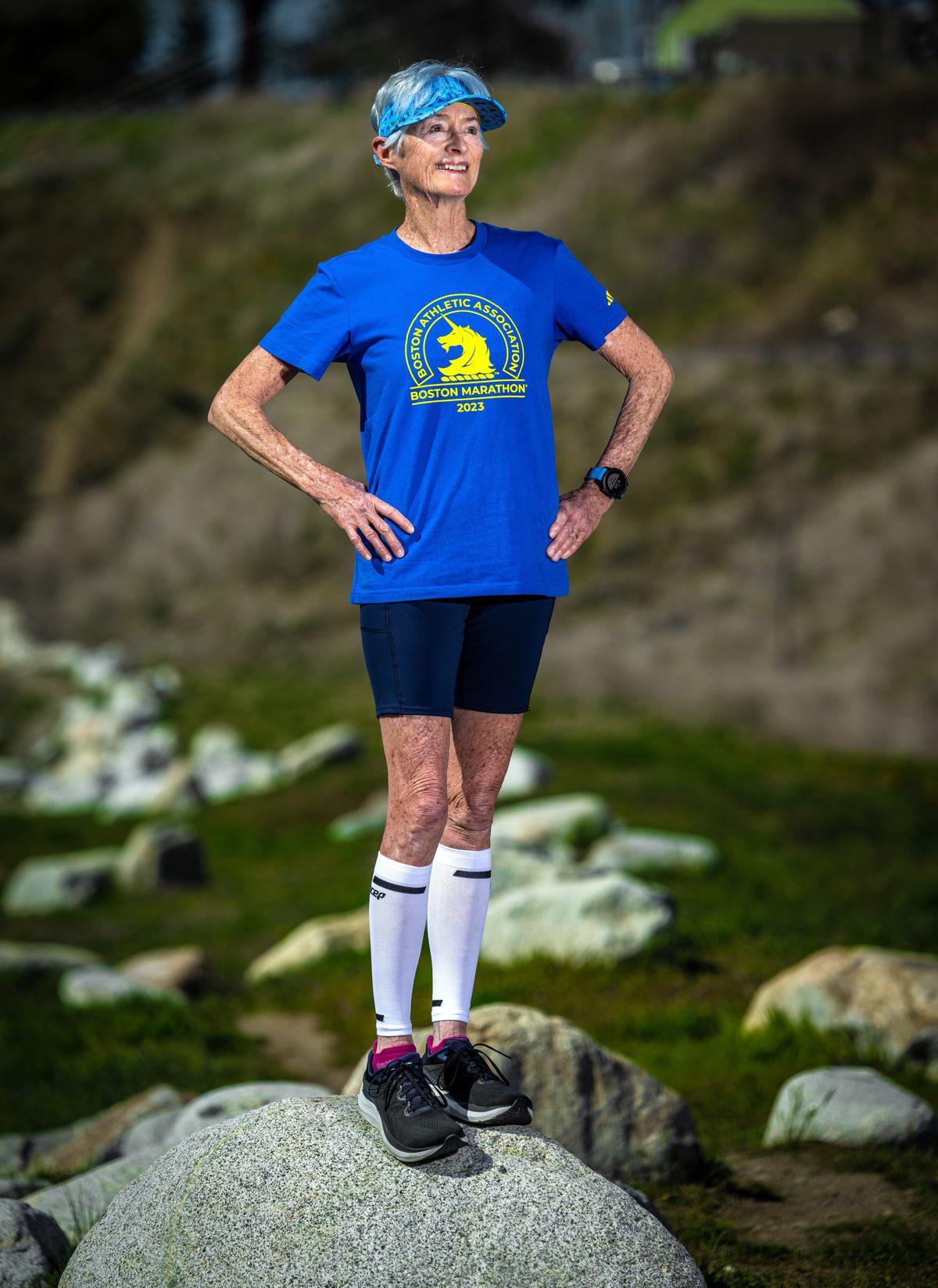Longtime Bloomsday runners power through the rigors of aging

It’s inevitable.
For many runners in their 60s, 70s and 80s, those Bloomsday times of less than an hour are a thing of the past. Chances are, so is the chase to run your age, which seemed like a much more reasonable goal as a 50-something.
But for age-defying June and Joe Machala, Bloomsday “perennial” runner Von Klohe and recent 70-year-old Boston Marathon participant Carrie Franchi and her husband, Gary, there is no stopping. Regardless of age.
For the most part, they listen to their bodies as the aging process takes its toll. Mentally, though, they are stronger, which gets them through the good and bad days – “perceived effort” is how Klohe likes to look at it.
“It’s a lifestyle,” Carrie Franchi said. “It keeps you going and keeps you young.”
Studies show that running helps control weight and boosts metabolism in all people, but it’s increasingly important for the 60-plus set. Physical fitness actually peaks in a person’s 20s and 30s, although elite athletes can sometimes avoid the declines until their 40s.
Eventually, cardiovascular endurance starts to decline, and muscle fibers begin to shrink in size and number. Strength, coordination and balance also decrease. Older adults are more prone to overuse injuries, including pulled muscles and strains.
“The key, I suppose, is to be patient with ourselves,” said Klohe, 74, one of 77 “perennials” who ran last year and have participated in every Bloomsday since the race began. “We all have some not-so-great days and wake up on the wrong side of the bed. It’s life, and we all have these rhythms. When you are 58 or 68, your body is telling you, ‘Are you kidding me?’ ”
There are many answers for how runners can fight the aging process and stay active. Knowing how our bodies react is important.
In a person’s 50s, muscles get tighter and connective tissue loses elasticity, so stretching and warming up are essential. In their 60s, maintaining balance and the ability to sense the position of one’s body in space (proprioception) starts to deteriorate.
And for runners in their 70s, lean muscle slips away and they can lose 40-50% of their strength, so strength training is one way to battle it. As the years pass, runners are more prone to hypothermia and heatstroke because of decreased circulation and sweat rate.
There are warning signs , but there are also benefits. A 2008 study by the Stanford School of Medicine found that regular running slows the effects of aging.
It showed that those with a longer span of active life are half as likely as aging nonrunners to die early deaths, and that runners have fewer “disabilities” throughout their lifetimes. The study found that an initial disability for runners was 16 years later than in nonrunners.
“You have to be kind and patient with yourself, so when you have a perceived effort, it’s telling you that this is it for today,” Klohe said. “Partly, it’s individual and what is in your own heart. Like many things, it’s a choice.”